How to Start a Firewood Business 2025
- September 21, 2023
- 1 comment
In the modern age of advanced technology, one might wonder if there’s still a market for something as traditional as firewood. Surprisingly, the demand for firewood remains robust, be it for warming homes in winter, camping trips, or backyard bonfires. If you’re interested in tapping into this evergreen market, you’re in the right place! This article will guide you through starting a firewood business, ensuring you can turn logs into gold.
1. Assess the Market
Before you immerse yourself in the rhythmic dance of axe and log, it’s essential to have a clear understanding of your potential audience. Blindly entering the market could leave you with a mountain of wood and no buyers. To ensure that every piece of timber finds a warm home, consider the following segments:
Homeowners with Wood-Burning Stoves or Fireplaces

These individuals are often on the lookout for quality firewood to warm their homes, especially during the chilly seasons. Their demand is typically consistent, making them a reliable customer base. Dive deeper: consider the demographics, the type of wood they prefer, and the quantity they consume annually.
Campgrounds and Parks
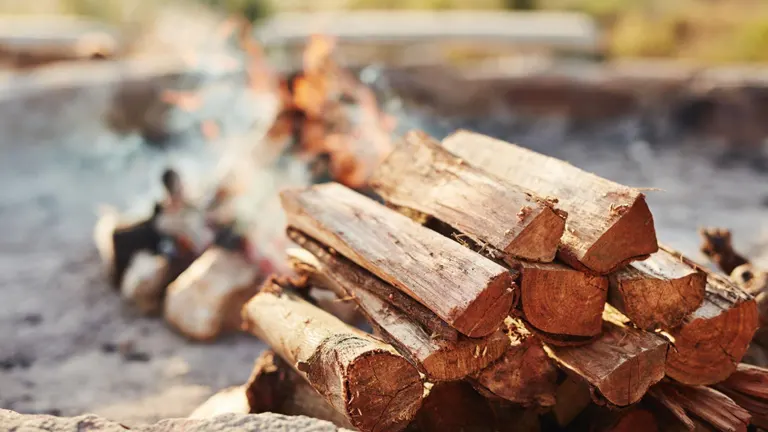
For those camping under the stars or looking for that authentic bonfire experience, firewood is indispensable. Campgrounds and parks frequently need substantial amounts of firewood for their guests. Establishing contracts with these entities can lead to bulk sales and recurring orders.
Restaurants with Wood-Fired Ovens

The smoky flavor from wood-fired ovens is unparalleled and sought after by many gourmets. Restaurants with such ovens have a continuous demand for specific types of wood that impart distinct flavors to dishes. Research the type and quality of wood these establishments prefer and consider approaching them with tailored offers.
Local Stores or Gas Stations Offering Firewood Bundles
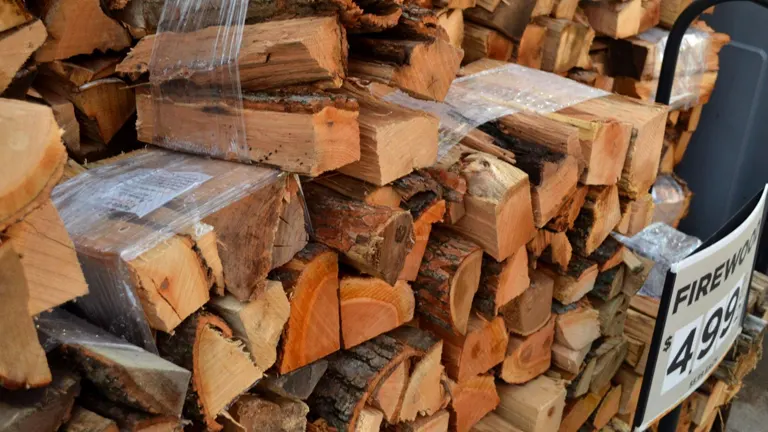
Convenience is king. Many travelers or last-minute shoppers rely on local stores or gas stations for their firewood needs. These outlets need a steady supply, and if you can offer them competitive rates and timely deliveries, you’ve tapped into a valuable sales channel.
Once you’ve identified these key segments, the real work begins. Dive into your local market – conduct surveys, attend community meetings, or even initiate casual conversations. This hands-on approach will offer insights into potential customers’ preferences, helping you gauge the volume of wood they might require and at what frequency. By aligning your supply with market demands, you set the stage for a thriving firewood business.
2. Source Your Wood
To ensure the flames of your firewood business never flicker out, securing a consistent and quality source of timber is paramount. It’s not just about finding wood—it’s about finding the right wood.
Logging Yourself
Embarking on your own logging adventure is a hands-on approach that offers the most control. If you’re fortunate enough to have access to woodlands, you’re sitting on a goldmine. Not only do you get to select the specific types of trees that cater to your market’s demand, but you also control the logging process, ensuring minimal wastage and optimal yield. However, with great power comes great responsibility: remember to adopt sustainable logging practices to maintain the ecological balance of your woodland

Buying Logs from Local Loggers
Collaborating with local loggers can save you time and effort, especially if you don’t have direct access to forests or if logging isn’t your forte. When going this route, focus on establishing trustworthy relationships. Spend time understanding the type and quality of wood they offer. It’s essential to negotiate fair prices, but equally crucial is ensuring the wood’s quality meets your customers’ expectations. Regularly inspect batches and communicate your needs clearly to your suppliers

Recycling Fallen or Discarded Trees
Nature’s misfortunes can be your boon. After storms, trees might be strewn around, or sometimes local authorities deem certain trees as obstructions and have them cut down. These discarded giants can be a valuable source of timber. However, not all that glitter is gold. Before you begin harvesting such wood, it’s imperative to consult local regulations. Some regions might have restrictions on collecting fallen trees due to concerns about pest infestations or conservation efforts. Being informed ensures you’re not only running a profitable but also a lawful business

3. Choose the Right Equipment
Just as a blacksmith relies on his anvil and hammer, your firewood business’s success hinges on the precision and efficiency of the equipment you choose. This is not just about chopping wood; it’s about optimizing the process, ensuring safety, and maintaining the quality of the wood from the forest to the fireplace. Let’s break down the must-haves:
Chainsaw (and Safety Gear)

The chainsaw is the heart of your operations. When selecting one, consider factors like power, weight, and reliability. It’s crucial to match the chainsaw’s capabilities to the type and size of trees you’ll be dealing with. However, wielding this powerful tool comes with inherent risks. Always prioritize safety. Invest in quality safety gear: helmets with face shields, ear protection, cut-resistant gloves, and safety chaps. Remember, in this business, your well-being is as valuable as the timber you’re chopping.
If you want to delve deeper into finding the Best Chainsaw for Firewood and Safety Gear, you can check out our article here!
Best Husqvarna Chainsaw for Firewood
Forestry Safety Equipment
Log Splitter
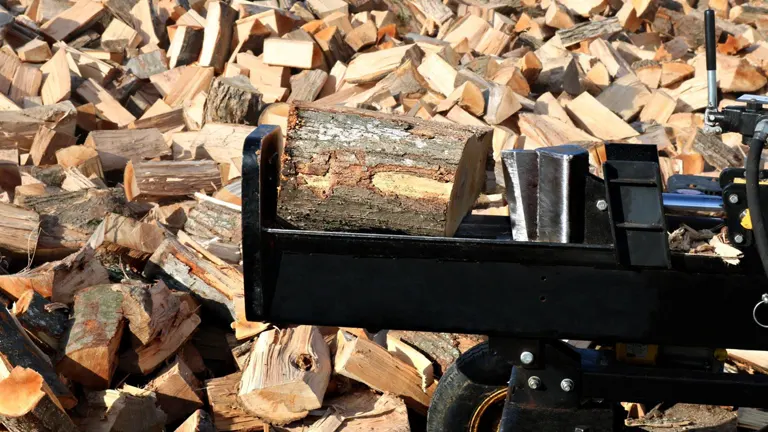
Once logs are cut, they need to be split into manageable and marketable pieces. Manual splitting with an axe is romanticized in many tales, but for a business, efficiency is king. A good log splitter can exponentially speed up your processing time. Depending on the volume you’re handling, you can opt for manual, electric, or hydraulic splitters. Whichever you choose, ensure it’s durable and suited to the size and type of logs you’re working with.
If you want to delve deeper into finding the Best Log Splitter, you can check our article here!
10 Best Log Splitters of 2023 Forestry Choice
Truck or Trailer for Transporting Logs
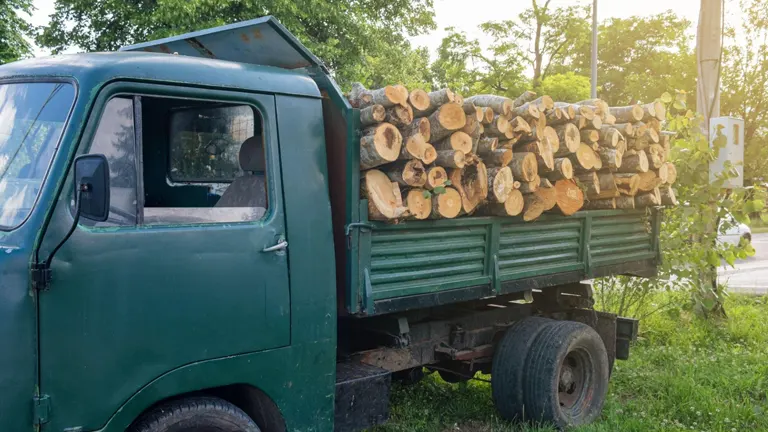
The journey for your wood doesn’t end in the forest. Getting it to your storage or directly to your customers is the next step. A sturdy truck or trailer is indispensable. Ensure it has the necessary capacity and is equipped to handle the weight and bulk of logs safely. Remember, overloading can cause wear and tear or even accidents.
If you want to delve deeper into finding the Best Truck Logs, you can check here!
Storage Area (like a Shed or Barn)
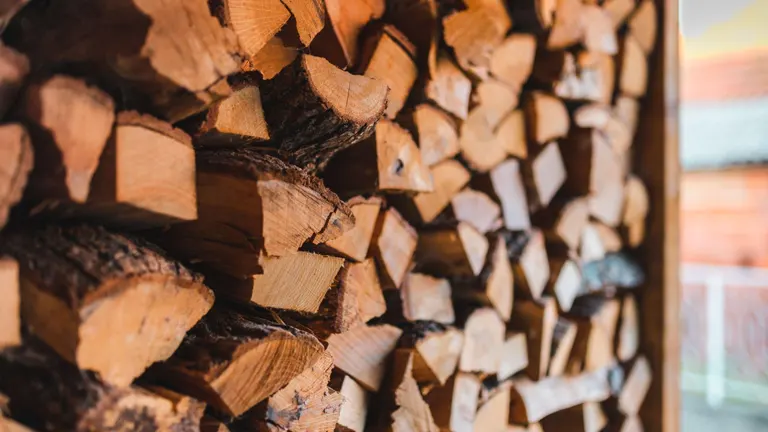
Once split, wood needs a home – a place where it can dry (season) and be shielded from the elements. A well-ventilated shed or barn is perfect for this. It’s essential that the storage area protects the wood from direct rainfall while allowing for air circulation to facilitate drying. Organize the wood to ensure easy access and avoid moisture buildup, which can lead to mold or decay.
Finding Storage for Your Firewood? You can check our Article here!
4. Season the Wood
Just as a fine wine improves with age, wood reveals its best qualities when given the time to mature post-cutting. Freshly hewn logs are brimming with moisture, and attempting to burn them prematurely can lead to a disappointing experience filled with billowing smoke and feeble flames. Seasoning, or the art of drying out wood, is the transformative process that elevates its burning quality.
Stacking
The method you employ to stack your wood can profoundly affect the seasoning process. To facilitate efficient drying, it’s essential to ensure each log receives ample airflow. Imagine the logs as books on a shelf – spaced enough for each to breathe but close enough to maintain a compact structure. Using pallets or raised platforms is beneficial as it lifts the wood away from the damp ground. This elevation prevents moisture from seeping into the logs from below, speeding up the drying process, and keeping unwanted pests at bay.
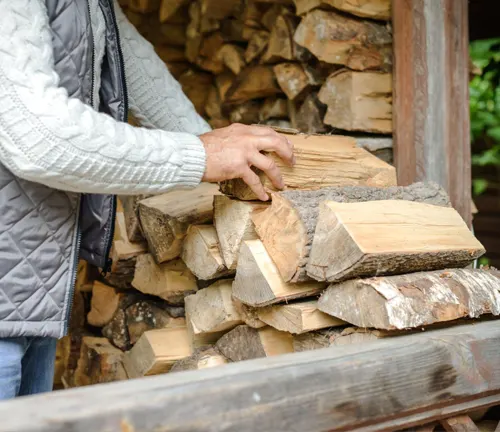
Covering
While shielding wood from moisture is essential, it’s a balancing act. Simply throwing a tarp over your stacked logs won’t do the trick. The goal is to protect the wood from direct rain or snow while still allowing it to breathe. Consider using a cover just for the top, ensuring that the sides remain open. This strategy provides protection from the elements while ensuring that fresh air circulates freely, aiding in the evaporation of moisture.
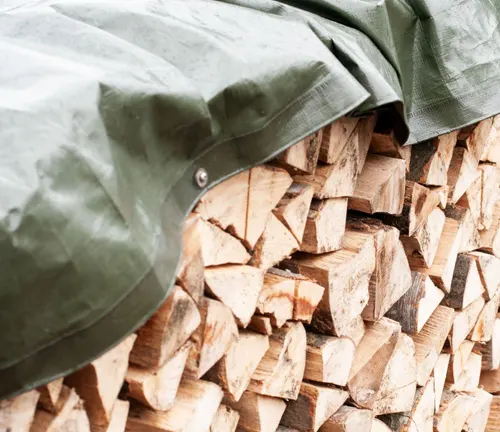
Time
Patience is the unsung hero of the seasoning process. Different wood species demand varying seasoning durations. Hardwoods, like oak, are dense and require a longer drying period, typically around 1-2 years. In contrast, softer woods, with their less compact cellular structure, dry out faster. Always keep in mind the type of wood you’re dealing with and adjust your seasoning timeframe accordingly.
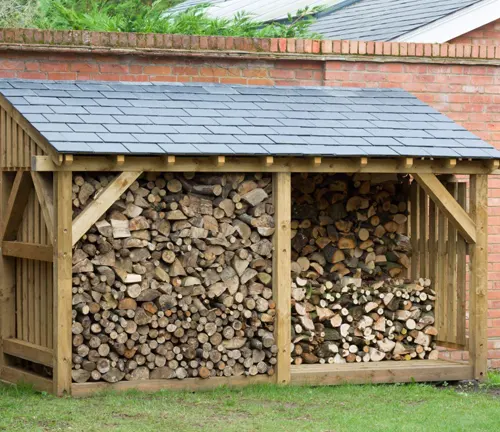
5. Licensing and Regulations
Venturing into the firewood business isn’t solely about understanding trees, tools, and techniques. To operate within the bounds of the law and ensure your venture thrives without hiccups, you must be well-acquainted with the intricate web of licenses and regulations that might apply. Ignoring this facet could result in fines, sanctions, or even a shutdown.
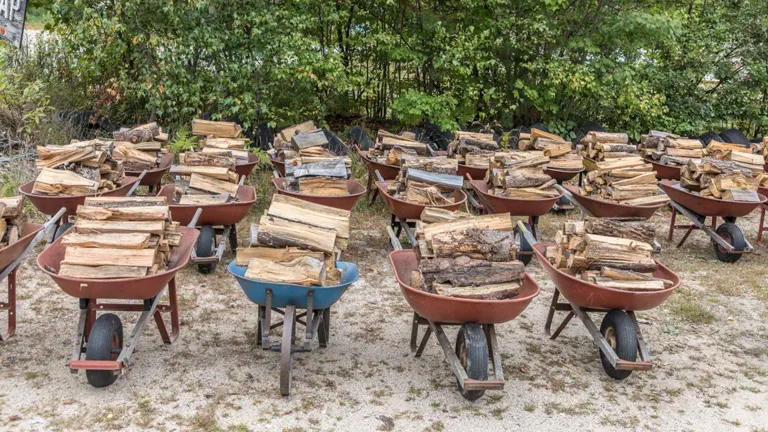
- Business Licenses – At the heart of your formal business operations lies the quintessential business license. This license is your official ticket to operate a commercial venture in your region. The requirements and processes to obtain one can vary based on locality, so it’s essential to consult with local government offices or business bureaus. Remember, having this license not only ensures you’re operating legally but also builds trust with customers and suppliers.
- Land-Use Permits (If You’re Logging Yourself) – If you’re taking the independent route and harvesting timber directly from woodlands, you might need a land-use or logging permit. This is especially true if the land isn’t personally owned or if it falls within specific zones designated for conservation or other purposes. Obtaining a permit indicates that you’re logging sustainably and ethically, minimizing environmental impact and preserving the ecological balance of the region.
- Transportation Permits – Transporting logs isn’t as simple as loading up a truck and hitting the road. Some states and regions have strict regulations about moving wood, especially across certain boundaries. This is primarily to curb the spread of pests, diseases, or invasive species that could be harmful to native forests. Before you transport, ensure you’re familiar with any quarantine zones, treatment requirements, or documentation needed to move your wood legally and safely.
6. Pricing and Selling Strategy
The heart and soul of any business lies in its ability to price its product attractively and then market it effectively. For a firewood enterprise, this extends beyond just chopping and seasoning wood—it’s about understanding the nuances of the market and aligning your offerings to meet consumer needs.
Research Local Prices
Knowledge is power. Embark on a reconnaissance mission to understand the prevailing firewood prices in your vicinity. This doesn’t mean you should undervalue your product, but it does serve as a benchmark. The aim is to strike a balance where your pricing remains competitive yet safeguards your profit margins. Regularly revisit this research, as market dynamics can change based on supply, demand, and even seasonal variations.

Bundling
One size doesn’t fit all, especially in the firewood industry. Different customers have varied needs. A camper on a weekend retreat might require just a small bundle, whereas a homeowner gearing up for winter would look for larger quantities. Cater to these diverse needs by offering wood in different sizes and bundles. This approach not only meets specific customer requirements but also can encourage higher sales volumes. For instance, presenting options like ‘Buy two bundles, get one free’ can attract buyers looking for both short-term and long-term stock.
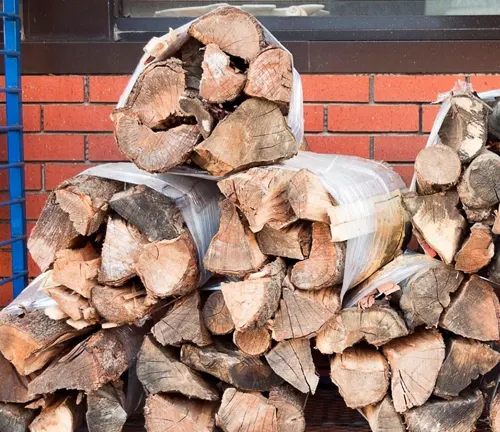
Advertising
In the digital age, the world is at your fingertips. Harness the power of social media platforms to showcase your products, share behind-the-scenes glimpses of your logging processes, or even educate followers about the benefits of seasoned wood. Local classifieds, both online and in print, are also valuable resources. They reach a community-centric audience that might be on the lookout for local firewood suppliers. And never underestimate the power of word-of-mouth. Encourage satisfied customers to spread the word, perhaps even incentivizing them with referral discounts. To lure in those tentative first-time customers, consider running promotions or limited-time discounts, creating a sense of urgency and value.

Finding the Best Firewood? Check our listing Here!
7. Delivering and Customer Service
In the bustling world of commerce, products often take center stage. However, in the firewood business, as with many other sectors, the experience you offer can be as impactful as the product itself. The way you handle deliveries and the quality of your customer interactions can make all the difference.
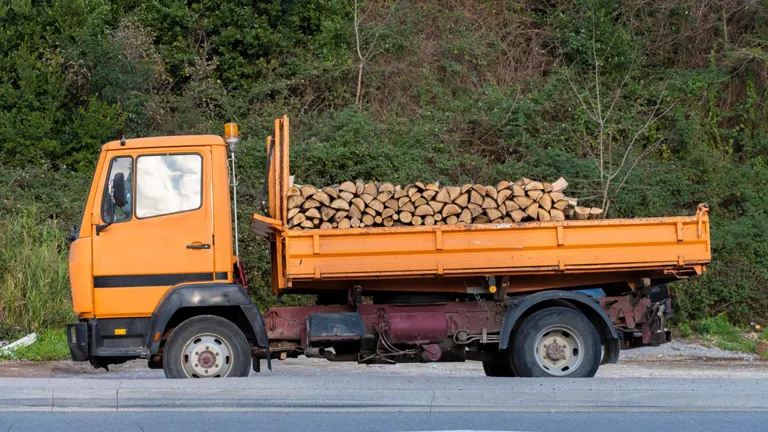
- Offering Delivery as a Distinctive Feature
Imagine a chilly winter evening. A homeowner wishes for a warm, crackling fire but lacks the firewood. Now, if your business offers doorstep delivery, it becomes a beacon of convenience in that cold moment. By offering delivery, you not only cater to the immediate needs of customers but also position your business as one that goes the extra mile (quite literally) for client satisfaction. This feature can provide a competitive edge, drawing customers to your service over others that might require pick-up. - Timeliness and Efficiency in Deliveries
A promise made is a debt unpaid. If you commit to delivering firewood at a specific time, it’s paramount to honor that commitment. Delays, especially during critical times like a cold snap, can tarnish your business’s reputation. Invest in reliable transportation and possibly even tracking systems to keep customers informed about their delivery status. Efficiency is as much about speed as it is about precision. Delivering the right quantity and quality, as ordered, showcases professionalism. - The Art of Customer Interactions
Every conversation with a customer, be it a query, a complaint, or simple feedback, is an opportunity. Approach each interaction with courtesy, understanding, and a genuine desire to help. Remember, people don’t just buy firewood; they buy the experience and trust associated with a brand. By being open to feedback and acting on it, you signal that you value and respect your customer’s opinions. - Harnessing the Power of Satisfied Customers
In the realm of business, word-of-mouth is gold. A customer delighted with your service becomes an ambassador, often more effective than any advertisement. Encourage satisfied clients to share their positive experiences, be it through testimonials, online reviews, or simply recommending you to friends and family. Their endorsements can serve as powerful tools for attracting new clientele.
8. Plan for the Off-season
Any business tied to seasonal variations must prepare for the ebb and flow of demand. While firewood might be the toast of the town during the chilly months, there’s a natural dip in demand as temperatures rise. But smart entrepreneurs see this downtime not as a challenge but as an opportunity. It’s a chance to diversify, innovate, and ensure year-round revenue streams.
Selling Wood Chips or Mulch
As spring and summer roll around, gardeners and landscapers are on the hunt for quality wood chips and mulch to beautify their green spaces and nourish their soil. Transforming leftover wood or branches into chips or mulch can cater to this demand. Not only does it provide a revenue stream, but it also aids in waste reduction, making your operations more sustainable.

Offering Tree Removal or Logging Services
With the summer months being more conducive to outdoor work, offering tree removal or logging services can be a lucrative venture. Homeowners looking to landscape their yards, or properties needing tree maintenance can be potential clients. By positioning yourself as a reliable service provider in this arena, you maintain a connection with your clientele, even when they’re not seeking firewood.
If you’re in search of a chainsaw for cutting or felling trees, feel free to explore our article by clicking HERE!
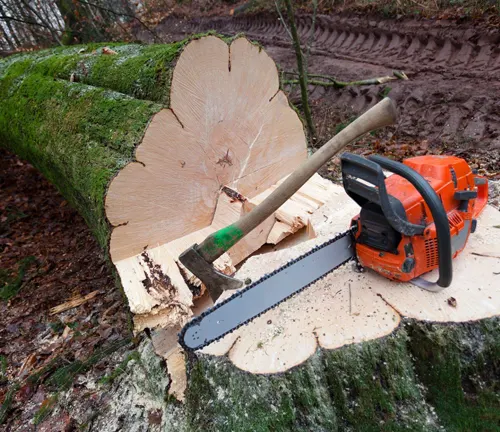
Exploring the Wholesale Market or Exporting
While local demand for firewood may decrease in warmer months, there might be other regions or countries still experiencing cold climates. Engaging in the wholesale market or exporting can open doors to such areas. It’s an ambitious move, but with the right connections and ensuring compliance with all international and local regulations, it can be a game-changer for your business.
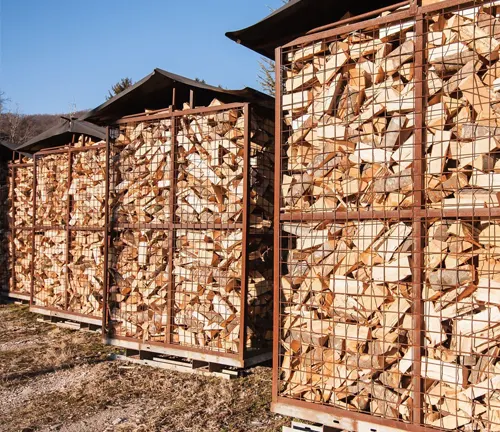
Every business cycle has its peaks and troughs. But what distinguishes successful entrepreneurs is their ability to adapt and innovate regardless of the season. By diversifying your offerings and exploring new avenues during the off-season, you not only maintain a steady revenue flow but also strengthen your brand’s foothold in the market. The goal is to remain relevant, resonant, and ready to seize opportunities, come rain or shine.
Conclusion
Starting a firewood business can be immensely rewarding. Not only are you offering a valuable service, but you’re also making a connection with one of humanity’s oldest traditions: the comforting warmth of a wood fire. With dedication, quality wood, and excellent customer service, your firewood business can thrive, keeping hearths burning and your profits blazing!
FAQs
- Is firewood a sustainable business in today’s eco-conscious world?
Absolutely. With responsible sourcing and sustainable forestry practices, a firewood business can be both profitable and environmentally friendly. Some consumers prefer wood as a renewable heating source over fossil fuels. - With the rise of electric heaters, is there still a demand for firewood?
While electric heaters are popular, many people still cherish the nostalgic, natural warmth and ambiance a real wood fire provides. Additionally, in many rural areas, firewood remains a primary heating source. - Can I combine a firewood business with other ventures like carpentry or tree services?
Certainly! In fact, branching out (pun intended) into related fields can help stabilize income throughout the year. For instance, while firewood might be in demand during colder months, tree services can be lucrative in the warmer seasons. - What are the risks associated with a firewood business, and how can I mitigate them?
Like any venture, there are risks, such as injuries from equipment, fluctuating demand, or pest infestations in stored wood. Proper safety training, market research, and regular wood inspections can minimize these risks. - Is seasoned wood always better than green wood? Why?
Seasoned wood has had time to dry, making it easier to burn and producing less creosote, a flammable residue that can build up in chimneys. While green wood can be sold, it’s typically at a lower price point due to its lower burning quality. - How can I ensure that my firewood doesn’t transport pests or diseases?
By sourcing wood locally, drying it properly, and keeping it stored off the ground, you can reduce the risk of pests. In some areas, regulations might require treating or inspecting wood before transport. - Can I make a profit from waste wood or unwanted logs?
Definitely! Salvaging fallen trees after storms or recycling discarded wood can be both cost-effective and eco-friendly. This approach can also appeal to eco-conscious customers. - How do I handle competition in the firewood market?
Quality service, offering unique wood types (like apple or cherry for smoking meats), or providing added services (like delivery or stacking) can help differentiate your business from competitors. - Is the firewood business seasonal? How can I maintain income throughout the year?
While there’s peak demand in colder months, diversifying your services or exploring different markets (like selling to restaurants or exporting) can bring in revenue year-round. - Can a firewood business be automated or made passive in the long run?
While the physical aspects (like logging and splitting) require active work, some processes like sales (through an online platform) or deliveries (by hiring drivers) can be semi-automated. Additionally, as your business grows, hiring a team can allow you more oversight and less day-to-day involvement.
As we wrap up our deep dive into the world of firewood businesses in 2025, we recognize that the embers of entrepreneurship burn brightly within many of our readers. Perhaps you’ve been fanning the flames of starting such a venture or have insights from your own fiery experiences. Whatever your story or perspective, we invite you to kindle a conversation below. Share your thoughts, queries, or even your own timber tales. Because just like a roaring campfire, it’s the collective sparks of our community that truly illuminate the path ahead

David Murray
Forestry AuthorI'm David Murry, a forestry equipment specialist with a focus on chainsaw operation. With over 13 years of experience, I've honed my skills in operating and maintaining a wide range of machinery, from chainsaws to log splitters. My passion for the outdoors and commitment to sustainable forestry drive my work, which emphasizes safety, efficiency, and staying updated with industry advancements. Additionally, I'm dedicated to sharing my expertise and promoting environmental awareness within the forestry community.













This has been very helpful insight to a business opportunity I am looking to venture into.
John Loutit
January 22, 2024 5:54 am